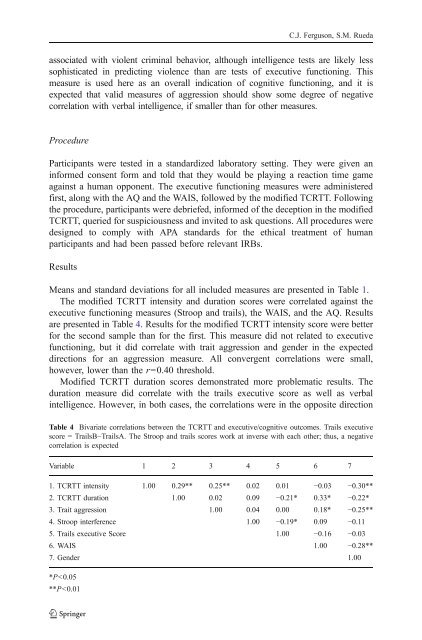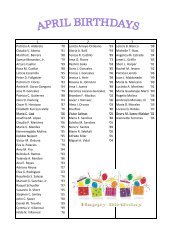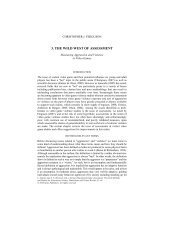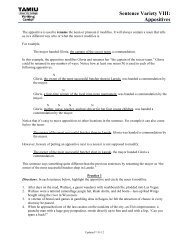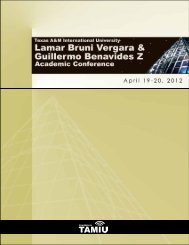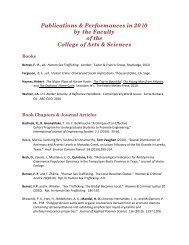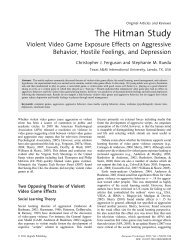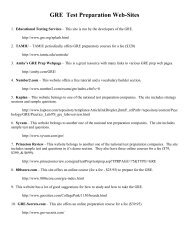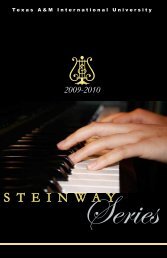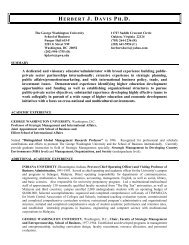Examining the validity of the modified Taylor competitive reaction ...
Examining the validity of the modified Taylor competitive reaction ...
Examining the validity of the modified Taylor competitive reaction ...
You also want an ePaper? Increase the reach of your titles
YUMPU automatically turns print PDFs into web optimized ePapers that Google loves.
associated with violent criminal behavior, although intelligence tests are likely less<br />
sophisticated in predicting violence than are tests <strong>of</strong> executive functioning. This<br />
measure is used here as an overall indication <strong>of</strong> cognitive functioning, and it is<br />
expected that valid measures <strong>of</strong> aggression should show some degree <strong>of</strong> negative<br />
correlation with verbal intelligence, if smaller than for o<strong>the</strong>r measures.<br />
Procedure<br />
Participants were tested in a standardized laboratory setting. They were given an<br />
informed consent form and told that <strong>the</strong>y would be playing a <strong>reaction</strong> time game<br />
against a human opponent. The executive functioning measures were administered<br />
first, along with <strong>the</strong> AQ and <strong>the</strong> WAIS, followed by <strong>the</strong> <strong>modified</strong> TCRTT. Following<br />
<strong>the</strong> procedure, participants were debriefed, informed <strong>of</strong> <strong>the</strong> deception in <strong>the</strong> <strong>modified</strong><br />
TCRTT, queried for suspiciousness and invited to ask questions. All procedures were<br />
designed to comply with APA standards for <strong>the</strong> ethical treatment <strong>of</strong> human<br />
participants and had been passed before relevant IRBs.<br />
Results<br />
Means and standard deviations for all included measures are presented in Table 1.<br />
The <strong>modified</strong> TCRTT intensity and duration scores were correlated against <strong>the</strong><br />
executive functioning measures (Stroop and trails), <strong>the</strong> WAIS, and <strong>the</strong> AQ. Results<br />
are presented in Table 4. Results for <strong>the</strong> <strong>modified</strong> TCRTT intensity score were better<br />
for <strong>the</strong> second sample than for <strong>the</strong> first. This measure did not related to executive<br />
functioning, but it did correlate with trait aggression and gender in <strong>the</strong> expected<br />
directions for an aggression measure. All convergent correlations were small,<br />
however, lower than <strong>the</strong> r=0.40 threshold.<br />
Modified TCRTT duration scores demonstrated more problematic results. The<br />
duration measure did correlate with <strong>the</strong> trails executive score as well as verbal<br />
intelligence. However, in both cases, <strong>the</strong> correlations were in <strong>the</strong> opposite direction<br />
Table 4 Bivariate correlations between <strong>the</strong> TCRTT and executive/cognitive outcomes. Trails executive<br />
score = TrailsB−TrailsA. The Stroop and trails scores work at inverse with each o<strong>the</strong>r; thus, a negative<br />
correlation is expected<br />
Variable 1 2 3 4 5 6 7<br />
1. TCRTT intensity 1.00 0.29** 0.25** 0.02 0.01 −0.03 −0.30**<br />
2. TCRTT duration 1.00 0.02 0.09 −0.21* 0.33* −0.22*<br />
3. Trait aggression 1.00 0.04 0.00 0.18* −0.25**<br />
4. Stroop interference 1.00 −0.19* 0.09 −0.11<br />
5. Trails executive Score 1.00 −0.16 −0.03<br />
6. WAIS 1.00 −0.28**<br />
7. Gender 1.00<br />
*P


